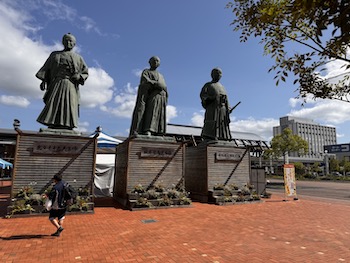Local heros: Three men of Kochi.
A Little Trip To Kochi City
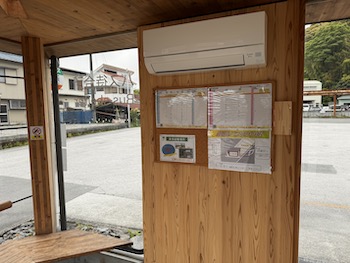
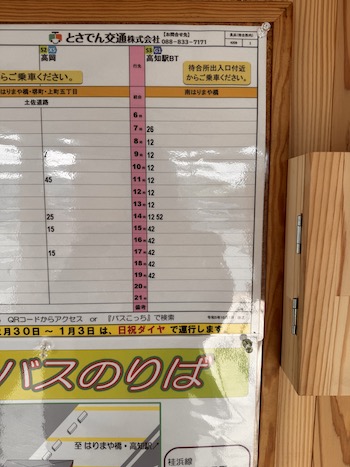
On Sunday, that same Sunday I met a man and his mother, I continued on the bus to Kochi City. I got off in front of JR Kochi Station and walked to the Kochi Sunday Market. It is a 300 year old open market featuring street food and refreshments, fish and meats, vegetables, jewelry, and crafts.
JR Kochi Station
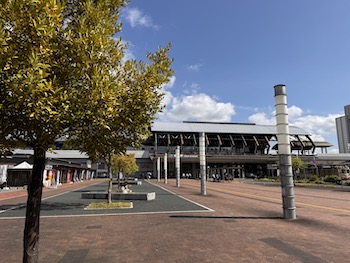
The bus stopped along a long boulevard next to the JR station. JR stations are train stations. Bus stations are usually located close by. I visited the information desk at the station to get a map of Kochi City and directions to the market.
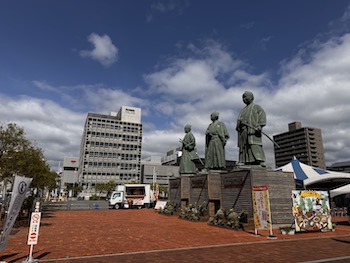
In the station plaza are statues of Sakamoto Ryoma, Takechi Hanpeita, and Nakaoka Shintaro. They were samurai who lost their lives while fighting to free Japan from a long-running feudal system.
The heroes lived during the Shogunate period in Japan. Their lives were cut short by extreme violence amidst the turmoil that existed at the time. Today, they are esteemed for helping bring about modernization in the country.
Kochi City Sunday Market
Kochi is a walkable city. However, tramway lines and local buses serve up easy transportation options.
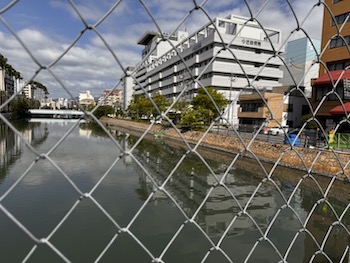
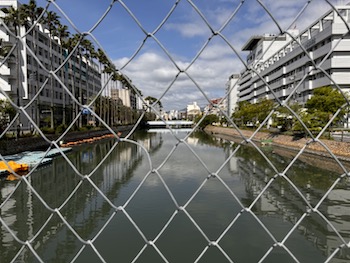
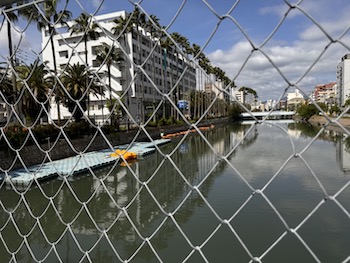
It is an easy twenty minute walk from the station to the market, so I walked and enjoyed a pedestrian’s view of the city.
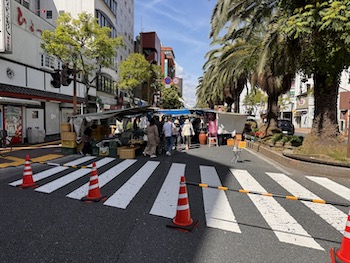
The main market street is blocked off for a mile with vendors and market visitors.
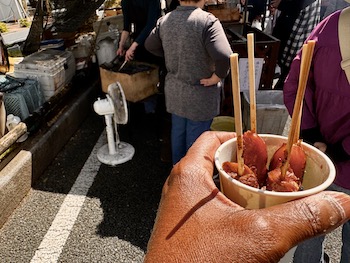
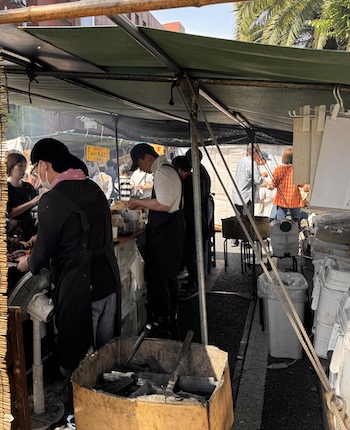
I waited in a long line for 4 grilled yakitori chicken skewers in a cup. Cut up chicken parts are threaded on a skewer and grilled while you wait. It was tasty and definitely not enough. I should have bought more, but I did not want to spend all my dinner money in one place!
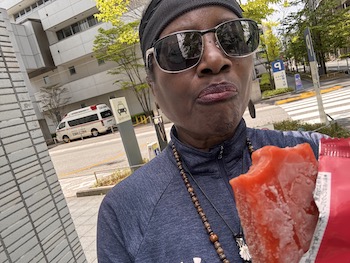
You see my reaction after biting into this popsicle? It gave me “brain freeze”!

Kochi Castle
The market street ends at the entrance of the castle. Just cross the street and you are on castle grounds.
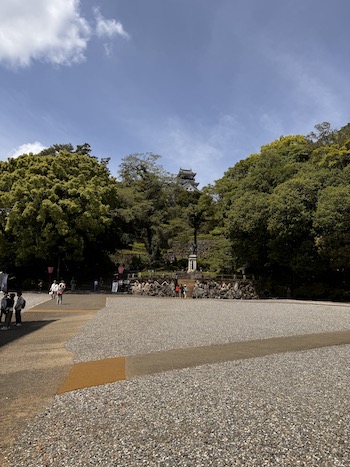
Constructed at the beginning of the 17th century, Kochi’s castle is the only one in Japan where the original castle tower and main castle keep remain intact. After centuries of surviving wars, fires, and other catastrophes, it is one of the last twelve original castles in Japan. It is designated an Important National Cultural Property.
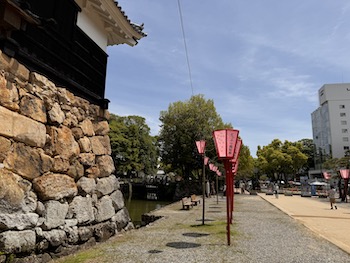
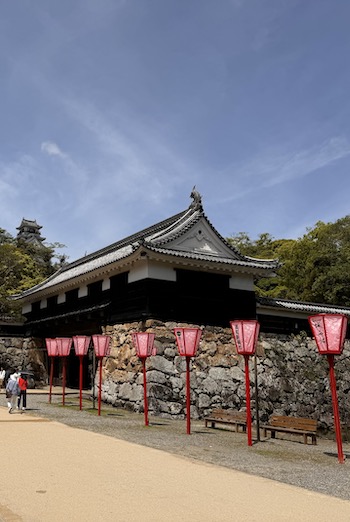
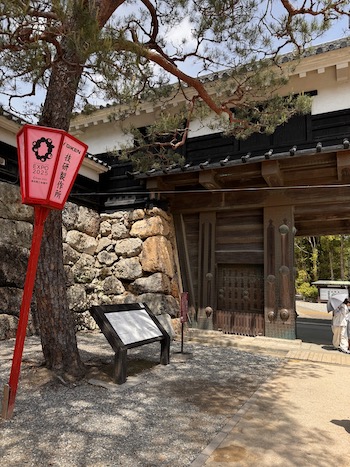
The property is a hirayamajiro, a hilltop-type castle, as it was built on the top of Mount Otakasaka, the hill overlooking Kochi Plain.
In order to visit the castle buildings, steep steps must be climbed. Each set of steps requires a moment to rest. No days off for this ohenro!
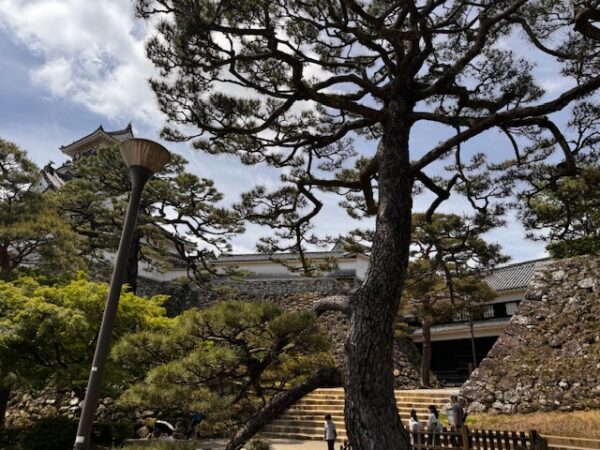
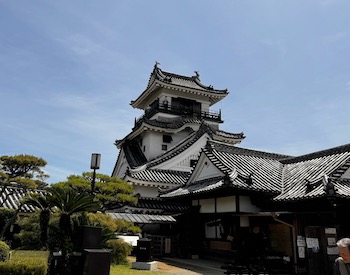
Castle architecture, statues of the shachi sea creatures (half fish, half dragon), gaze down on the city from the roof.
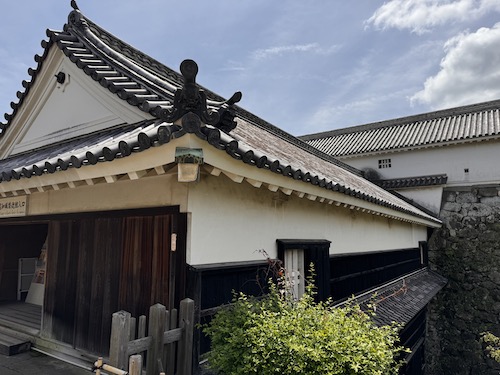
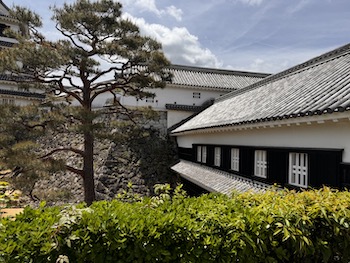
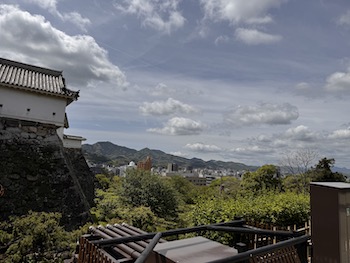
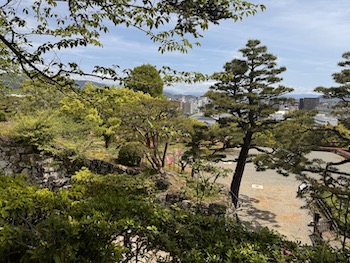
The country’s flag is prominently displayed on the castle grounds.
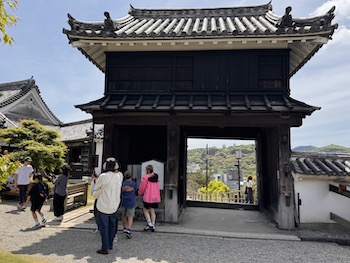
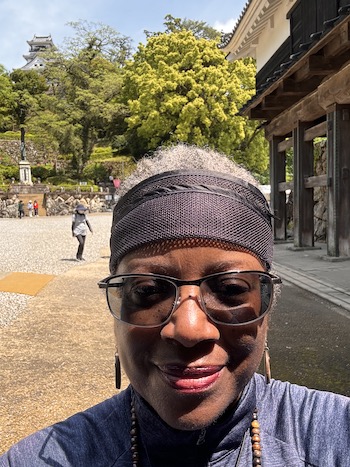
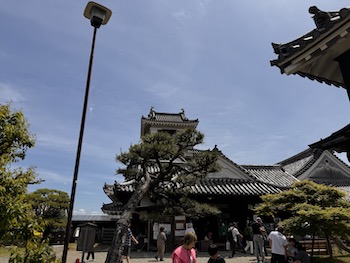
Short tour on the return to Kochi Station
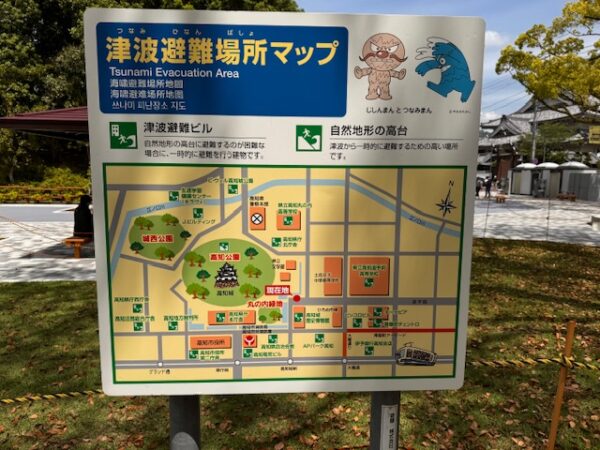
Another reminder to stay aware of the danger of tsunamis is ever present even in the city. The elevated castle grounds is a designated evacuation site. On the map is Kochi Castle (in the middle of the large green area) and part of the central city grid.
Here is an example of umbrella culture at a commercial building, I think it is a medical clinic.
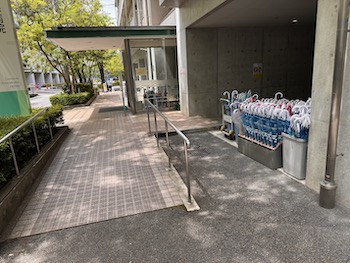
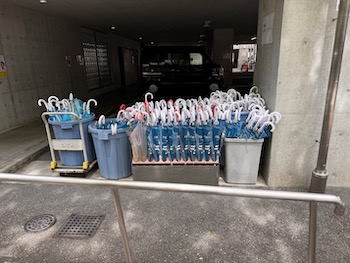
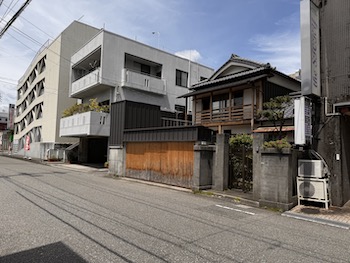
Here is a typical city street with a mixture of residential and commercial buildings.
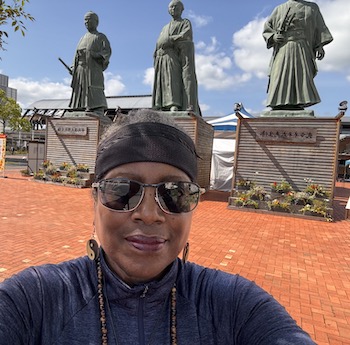
See you next time.
Baadaye and Mata Ne (またね)
Shirley J ♥️
This and several posts this summer will chronicle my pilgrimage in Japan where I am walking the 1200 kilometer-long Shikoku 88 temple pilgrimage. Read my announcement here.

